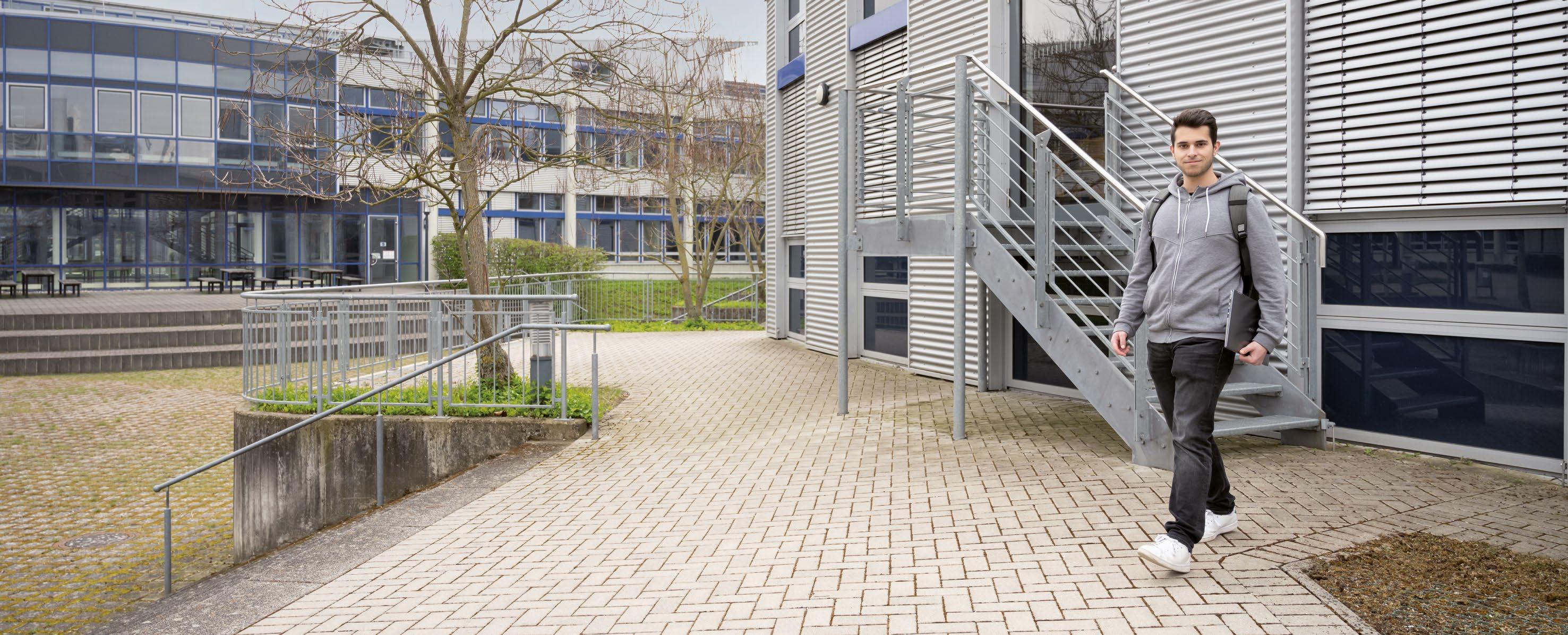
4 minute read
Students’ ideas for the university of the future
Philipp Butz
studies in the cooperative degree programme Electrical Engineering Janet Elfers und Nicole Piasetzki
studieren Nachhaltige Sozialpolitik. Im Studium lernen sie, wie man soziologische Phänomene erforscht und sich für ein Thema Gehör verschafft. Team an der
Studying is comparable to hiking. You take a certain route and know approximately where you want to end up. But even though you have a rough idea of the route, there are many little forks in the road where you have to check the direction. At Ford, my training company, various options are open: mechanical engineering, electrical engineering and sustainable engineering. After I had decided on a path, I was faced with another fork in the road in my third semester – which specialisation module should I choose? I decided on electronic systems, and now I realise that the closer I get to the Bachelor’s thesis, the more the route branches out. Now I really have to think about where I want to go. My boss takes the pressure off me and keeps emphasising that studying is not a one-way street. No matter where I end up, many more new paths open, and I can set off on a new course
Into the future
Virtual and augmented reality (VR and AR) are the technologies of the day. Now they are to be better integrated into teaching.
While both technologies are used in daily life and leisure, they are rarely considered in the scope of higher education. Wrongly so, according to Hochschule Bonn-Rhein-Sieg. The university wants to anchor AR and VR permanently in teaching. “Teachers and students don’t have to be in the same room, but during a course – and this is the big advantage – the spatial impression of a 3D model can be perceived”, explains André Hinkenjann, Professor of Computer Graphics and Interactive Environments.
For this reason, he and his colleagues are taking the lead in a unique project. The aim of “AR/VR.nrw – Augmented and Virtual Reality in Higher Education” is to develop software that will serve as a basic framework in the future. After its completion in 2021, the software will be available free of charge to all higher education institutes in NRW via an open source licence and will serve as both assistance and inspiration. AR and VR can thus become part of daily university life and enable teachers, even without extensive IT knowledge, to integrate virtual and augmented reality into their lectures and develop their own course content. As an example, Hinkenjann mentions “a teaching unit on the diffusion of light and lighting design. This requires three-dimensional models which can be visualised with the help of VR or AR glasses”. Experiments of this kind are conceivable in subjects such as electrical engineering, lighting technology, media technology or architecture.
Continuous development
The hope is that in the future, universities outside NRW will also be inspired to research and teach in this field in order to continuously develop the key technologies AR and VR. It is also hoped that the open-source approach will encourage cooperation amongst researchers. “In addition, the open source idea aims at a continuous and differentiated refinement of software, features, applications and connection with future technologies”, explains Hinkenjann.
Along with H-BRS, RWTH Aachen University, the University of Wuppertal and Hamm-Lippstadt University of Applied Sciences are also involved in developing the software. The project is receiving financial support from the NRW Ministry of Science in the amount of about 1.5 million euros for three years. Hochschule Bonn-Rhein-Sieg is one of the most research-intensive universities of applied sciences in NRW and nationwide. In order to keep it that way, new paths must be forged again and again.
In the field of sustainability research, many new future-oriented topics are currently being developed at our university. Research into decentralised hydrogen storage is one example. It offers flexibility in storing electrical energy from renewable energy sources, hence facilitating their practical use. This is an important contribution to reducing CO2 emissions.
Research and transfer are closely intertwined spheres of activity at the university. That is why the university‘s Research Commission was expanded into a Research and Transfer Commission. An important topic for the commission in 2020 was assessing the ethics of research projects. A new process was set up to support all researchers at the university with ethical questions about their projects.
A topic that preoccupied our entire society in 2020, not least due to the effects of the pandemic, is digitalisation. We also forged new paths in research in 2020:
• the Project for the Professionalisation of Research Data
Management FDM-Scouts, funded by the Digital University NRW (DH), has begun in the library with this goal in view;
• in cooperation with the DH NRW, we conducted a survey for standardising information on research activities. The aim is to create a nationwide standardised core data set for research.
We are also forging new paths for young academics. The new NRW Promotionskolleg of the universities of applied sciences offers doctoral candidates and supervisors a professional environment for doctoral procedures with extensive networking opportunities. The review by the Science Council in 2021 aims at obtaining the right for the Promotionskolleg to award doctorates. This is a new path that is long overdue. The professors at Hochschule Bonn-Rhein-Sieg currently supervise over 120 doctoral students.
Forging new paths in research
Prof. Dr Margit Geißler
Vice President for Research and Young Academics










